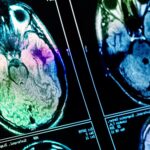A recent study published in the journal Dreaming sheds new light on the relationship between near-death experiences and dreaming. The research found that individuals who have had a near-death experience (NDE) report more frequent and vivid dreams, including lucid dreaming, out-of-body experiences, and even precognitive dreams, compared to those who have not come close to death.
Near-death experiences are rare but profoundly impactful events, often described as moments of heightened awareness and sensory perception that occur when a person is close to death. While these experiences are usually brief, they can leave a lasting mark on individuals, sometimes sparking dramatic shifts in attitudes, beliefs, and even physiological traits. Researchers have been interested in NDEs not only because they offer insight into how the brain functions under extreme conditions but also because they might hold clues to understanding the broader nature of human consciousness.
One area that remains underexplored is the potential relationship between NDEs and dream states. Previous studies have hinted at unusual dream phenomena among those who have had NDEs, such as increased dream vividness and more frequent lucid dreams. However, few studies have systematically compared the dream experiences of NDE survivors with those who have not come close to death.
“I have always been interested in unusual states of consciousness from a very young age, having experienced a number of exceptional or extended conscious states myself,” said study author Nicole Lindsay, a senior psychology lecturer at Massey University. “Near-death experiences (NDEs) provide insight into how consciousness operates under extreme conditions, including potentially, in the absence of a functioning physical body. What could be more fascinating than that! I completed a PhD in this area in 2018 and have continued to research in this area ever since.”
The study included three groups of participants: 138 people who had experienced an NDE, 45 individuals who had been through a life-threatening event but did not report having an NDE, and 129 participants who had never come close to death. All participants were asked to complete a detailed online questionnaire. The questionnaire included questions about their dream experiences, trauma symptoms, and demographic information.
Dream-related questions were drawn from a well-known psychological tool called the Mannheim Dream Questionnaire, which assesses various aspects of dreaming, such as dream recall frequency, emotional intensity, and experiences of nightmares or lucid dreams. Additional questions specifically asked participants about more unusual dream experiences, including out-of-body experiences and precognitive dreams (dreams in which the individual seemingly gains knowledge of future events). Trauma symptoms were measured using the Impact of Event Scale, a widely used tool that assesses how much individuals are affected by traumatic events, looking at symptoms such as intrusive thoughts and hyperarousal.
The researchers found significant differences in the dream experiences reported by the NDE group compared to the other two groups. Participants who had experienced an NDE reported more frequent and vivid dreams, and they were more likely to recall their dreams regularly. They also described more emotionally intense dreams, though the emotional tone of these dreams was generally more positive than that reported by the other participants.
One of the most striking findings was the increased frequency of lucid dreams, out-of-body experiences during sleep, and precognitive dreams in the NDE group. Lucid dreams, where individuals are aware they are dreaming and can sometimes control the dream, were much more common among those who had an NDE. Out-of-body experiences during sleep, in which individuals feel as though their consciousness has separated from their physical body, were also more frequent in the NDE group. Finally, NDE survivors reported more precognitive dreams, in which they seemed to have knowledge of future events.
Interestingly, while nightmares were more common among those who had experienced an NDE, these participants still reported a more positive overall emotional tone in their dreams compared to the control group. This suggests that while NDE survivors may experience disturbing dreams, their dream life as a whole may not be as negatively affected as one might expect.
“Both the phenomenology and after effects of near-death experiences have been documented for quite some time,” Lindsay told PsyPost. “However, we know less about the physiological changes that might occur after NDEs. Although anecdotally many people who have NDEs describe unusual dream experiences occurring post-NDE, including an increased frequency of psi (psychic or paranormal) experiences like precognitive dreaming or out-of-body experiences, this research provides a measure of empirical support for these claims. It’s widely acknowledged that alterations to sleep and dreaming can occur after traumatic events like life-threatening episodes, but we found these atypical dream states were related to NDE phenomenology rather than post-traumatic stress.”
When the researchers examined the potential reasons for these differences, they found that the intensity of the NDE—how deep or transformative the experience was—was closely linked to the frequency of lucid dreams, precognitive dreams, and out-of-body experiences. In contrast, trauma symptoms, such as those associated with post-traumatic stress, were more strongly related to the occurrence of nightmares and sleep disturbances.
“We conducted some follow-up interviews with participants about their dream experiences and they were so intriguing that we decided to write up these findings independently,” Lindsay said. “One of the more unexpected findings was that elements of the NDE, particularly communication or contact with entities or beings encountered during the NDE, tend to transition into dream states afterwards.
“I remember one participant from my PhD studies stated ‘it’s like I still have one foot on the other side’ and that pretty much sums it up. Dream states seem to bridge that gap between the state experienced during the NDE, and everyday waking reality.”
“Another surprising and quite bizarre finding was that, following the NDE, some people appear to be able to tune into another’s consciousness whilst dreaming, either in the past, present or future,” Lindsay added. “Sometimes these experiences were quite mundane, like walking through a house their friend was thinking of buying or tasting what another person was eating for lunch. It was as though they were experiencing it from the other person’s perspective. These dream experiences were often very vivid, indistinguishable from reality and could be quite confusing for the experiencer. Some people also become very adept lucid dreamers and have impressive control over their dream states.”
Although this study offers intriguing insights into the relationship between NDEs and dream experiences, it is not without limitations. One of the main challenges in studying NDEs is that they cannot be induced under controlled conditions. As a result, researchers must rely on retrospective self-reports.
“NDEs are obviously quite difficult to study under controlled conditions,” Lindsay noted. “We can’t deliberately induce NDEs, they tend happen spontaneously and it’s impossible to predict when one will occur. We are therefore typically reliant on retrospective self-reporting which can introduce issues such as social desirability, self-enhancement or memory biases.”
“Although most people who have NDEs claim that psychophysical changes only occur after the NDE, we can’t be certain about causal direction. It may be that a specific neurological or personality configuration may increase the likelihood of experiencing NDEs as well as other unusual conscious states such as lucid dreaming, out-of-body experiences and precognitive dreams, rather the NDE actually causing these exceptional dream experiences.”
The study’s authors are eager to pursue more research in this area, particularly to investigate the potential brain changes that might occur following an NDE.
“I am very interested in exploring the neurological changes that seem to occur following NDEs,” Lindsay said. “I noticed that many of the dream experiences people reported, such as increased lucid dreaming, are very similar to experiences described by long-term meditators and other practitioners of extended states of consciousness. I’m really keen to utilize brain imaging to determine whether neurostructural changes occur and whether they match those observed in experienced meditators. I’m also extremely interested in the psi abilities that people often report following NDEs and are hoping to pursue further research in that area.”
The study, “Trauma or Transcendence? The Relationship Between Near-Death Experiences and Dreaming,” was authored by Nicole Lindsay, Natasha Tassell-Matamua, Laura O’Sullivan, and Rosemary Gibson.




